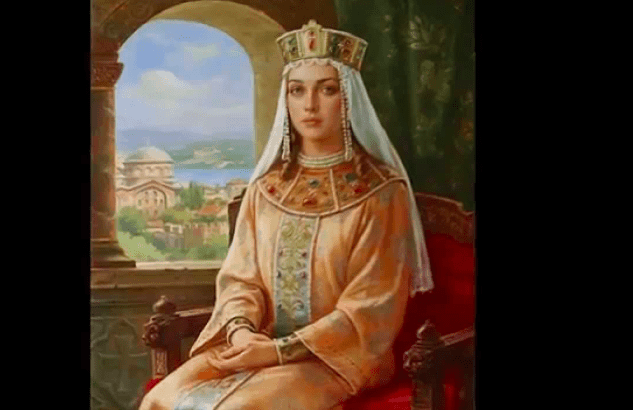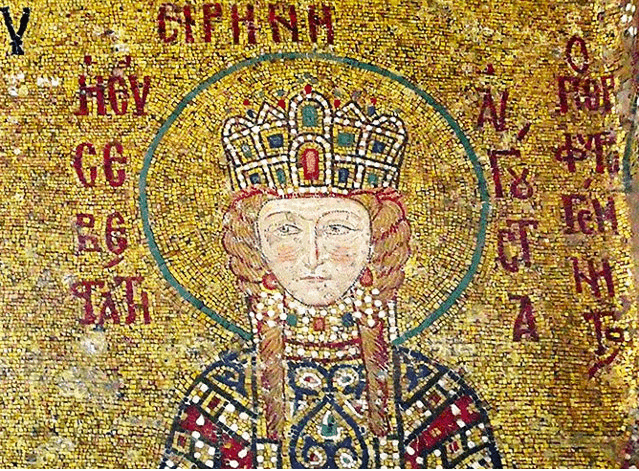Irene of Athens, (Εἰρήνη ἡ Ἀθηναία) died on August 9, 803 AD.

The first woman ever to hold the throne of the Roman Caesars in her own right, she is also known as Irene Sarantapechaina and was a Byzantine Empress from 797 to 802.
She is best known for ending Iconoclasm, which is the social belief in the importance of the destruction of religious icons.

She convened the Seventh Ecumenical Council and restored the veneration of icons in the Byzantine Empire. Her usurpation of the imperial throne created a theoretical justification for the coronation of Charlemagne.
Irene was related to the noble Greek Sarantapechos family of Athens and was brought to Constantinople by Emperor Constantine V on 1 November 768 and was married to his son Leo IV.
On 14 January 771, Irene gave birth to a son, the future Constantine VI. When Constantine V died in September 775, Leo succeeded to the throne at the age of twenty-five years. Leo, though an Iconoclast pursued a policy of moderation towards Iconodules his policies became much harsher in August 780, when a number of courtiers were punished for venerating icons. According to tradition, he discovered icons concealed among Irene's possessions and refused to share the marriage bed with her thereafter. Nevertheless, when Leo died on 8 September 780, Irene became regent for their nine-year-old son Constantine.
Noted for her liberality, her freeing of prisoners and, above all, for her convening of the Second Council of Nicaea, and for her efforts to restore the veneration of sacred images, Irene was popular among the people despite the irregularity of her conduct of the affairs of state.
Irene came to power as regent for her son (780) in the midst of the iconoclastic controversy which wracked the Empire for a century (726-87, 815-43). The veneration of sacred images (icons) having grown in intensity and popularity ever since the legalization of Christianity in the fourth century, had developed remarkably in the sixth and seventh centuries, especially encouraged by the emperors of the Heraclid dynasty.
Irene's most notable act was the restoration of the veneration of icons (images of Christ or the saints). Having chosen Tarasios one of her partisans and her former secretary, as Patriarch of Constantinople in 784, she summoned two church councils. The first of these, held in 786 was frustrated by the opposition of the iconoclast soldiers. The second, convened at Nicaea in 787, formally revived the veneration of icons and reunited the Eastern Church with that of Rome.

